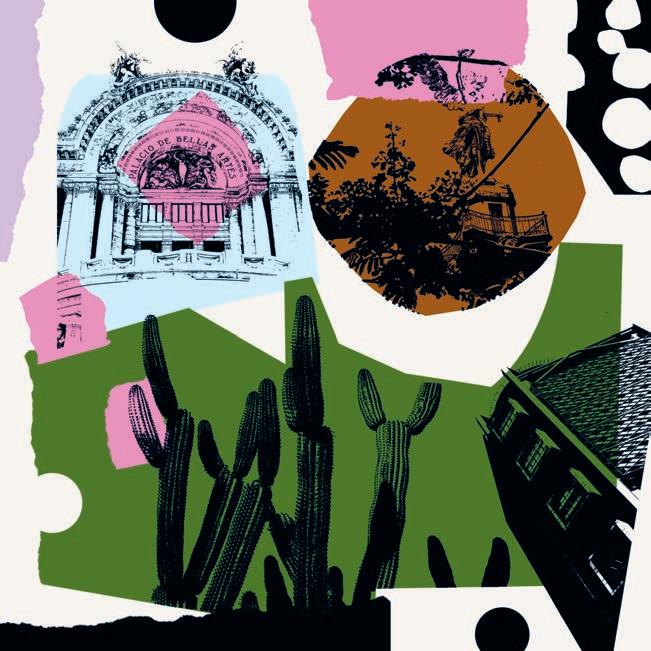
6 minute read
THE NECESSARY PRESERVATION OF CULTURE
Digital nomads have made big e orts to integrate into the environment by adopting the local values. Some creatives have even drawn inspiration from the city’s vibrance to spark ideas for their cra s, from design, photography and art to journalism, film and music.
Among the creative magic, however, it’s impossible to ignore the elephant in the room: the Mexican capital is experiencing rapid gentrification, causing concerns among locals. Questions about the city’s culture being lost and substituted have dominated dinner table conversations across the city this year. This isn’t exactly new. We’ve seen neighbourhoods such as Roma and Condesa – once rich in culture and home to local businesses – transformed into “trendy” hotspots, with highly-priced restaurants, bars, coffee shops and housing inaccessible to the majority of the capital’s population. It’s natural that fears of this happening again – on a bigger scale – have been triggering.
Advertisement
by Sagal Mohammed
“ ere’s beauty in the power of creative collaboration,” says rapper, entrepreneur and long-time Soho House Chicago member Vic Mensa. “It can build bridges across continents that bring people together.” Earlier this year, the American-Ghanaian hip hop artist –born Victor Kwesi Mensah – did just that, hosting the inaugural Black Star Line Festival in Accra with friend and co-organiser Chance the Rapper. It was held at the historic Black Star Square arena in Ghana’s capital as a celebration of young African descendants – 50,000 of which were in a endance. “As a kid, I couldn’t imagine a time when all of my people from Chicago would be with my people in Ghana embracing the music, but this was that moment,” says Mensa. e festival was conceptualised on the fi h floor of Soho House Chicago, where Mensa and fellow Chicagoan Chance would plot ways to bring their vision to life, having first birthed the idea during a joint trip to Ghana – one of our Cities Without Houses (CWH) locations – in December 2021. “I’ve been visiting Ghana with my family for most of my life but more recently, started going alone and spending time in Accra to immerse myself in the art scene, the music ecosystem and the fashion,” explains Mensa. It made me realise that there was this massive gap between the Black
American experience, Black American music and the African people. There were no opportunities for the artists to connect with the fans. It made me realise that I’ve never performed in Africa, and I’m from Africa. at was when I started to theorise the ways I could bring people into the culture over there and also create opportunities for international artists to connect with the people.”
When he received an “out of the blue” call from Chance, expressing his interest in visiting Ghana, Mensa immediately made arrangements for his friend to join his upcoming trip. “It was his first time in West Africa and it was a life-changing experience with his ancestry.” It is one many African Americans and the diaspora can relate to: since 2019’s “Year of Return” – an initiative by the Ghanaian government and US-based organisation e Adinkra Group – Accra has acted as a gateway to Africa for a new generation of youth yearning to reconnect with their roots through homegrown culture and creativity.
Working closely with local creatives and event planners in Accra, some of which are among Soho House’s CWH membership in the city, Mensa, Chance and their team pulled off one of the biggest international festivals on the continent. They tapped the likes of Erykah Badu, T-Pain and a host of locally renowned African artists, including Sarkodie and Asakaa Boys, to perform.
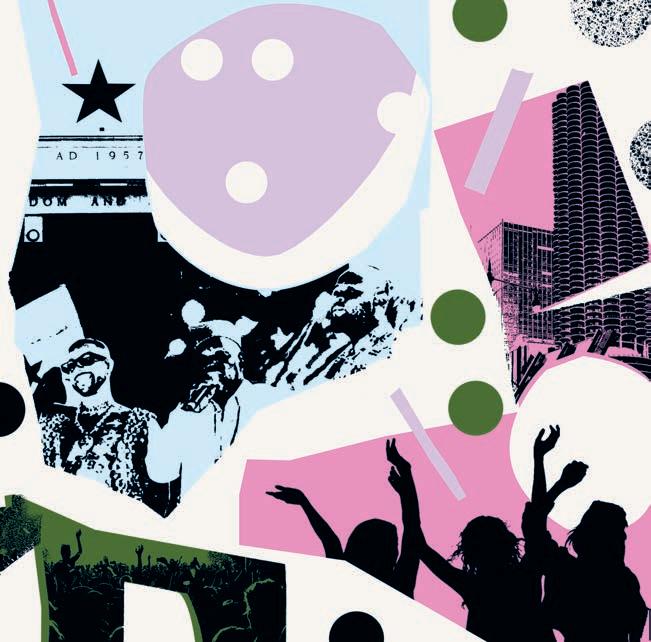
Fellow Soho House Chicago members Uduimoh and Oshoke Umolu were also sold on the idea. The Ghanaian-born, Chicago-based brothers are the founders of Jon Basil Tequila – the festival’s primary spirit sponsor. The collaboration was seamless, given their shared links to Ghana and Chicago, as well as being part of the Soho House community.
“Soho House has been a centerpiece of the creative community in Chicago. We take meetings, do performances and host listening parties and events,” says Mensa.
“It has become a real homebase for me. I got new projects with tech founders that were birthed from relationships I made by being at the House. I like to shoot a game of pool and ideate. at’s what this space is for – cooking up ideas.”
Chicago and Accra are ubiquitously influential in Black culture. “For decades, Chicago has been the main driver of many cultural facets of pop culture, hip hop and drill music globally,” says Mensa. “Ghana’s cultural youth community is evolving expeditiously in its own right. e movement is undeniable, so uniting the two worlds just makes sense.”
Sagal Mohammed is theContent Editor at Soho House and a member of White City House
by Luis Carreño
Mexico City is a place of a million stories. To live in it is to know that they’re all waiting to be uncovered; hidden inside the Porfirian houses of Colonia Roma, the colonial buildings in the historic centre, the skyscrapers on Reforma Avenue and Multifamiliares in Tlatelolco. It’s knowing that there is a tianguis (a traditional open-air bazaar) for each day of the week, where you’ll be met with fresh fruit and vegetables, meat and fish, locksmiths, and jewellery stands, all tucked under colourful tents. Here lies the identity of CDMX, home to a melting pot of cultures. Its Mesoamerican origins come together with European, African and Asian migrants, as well as a new generation of Latin Americans, who have historically used Mexico as an obligatory passage to reach the United States.
Post-COVID, the city has also become home to a wave of “digital nomads”; individuals who fulfil their work obligations while living remotely. In 2020, many migrated from places with tight restrictions, such as France, Germany, Belgium and the United States. Mexico was among a small number of destinations open to the world at the time – an enticing prospect for those wanting to enjoy a breath of fresh air again. As the world opened up, many decided to stay, making Mexico City their new home.
Miguel, is proof that – through respect for local beliefs, people and places – it is possible to add value that strengthens Mexican culture and identity.
Historically, Mexico has been a country of asylum, welcoming those who must or want to leave their places of origin. Reading texts by Gabriel García Marquez, Roberto Bolaño and the Beat Generation, admiring the art of Remedios Varo, Matías Goeritz and Pedro Friedberg, or listening to the music of Chavela Vargas and Luis ere is so much to admire about this place. e music, the smell and sounds of our streets, our diverse gastronomy and local produce are the reason many are drawn to CDMX in the first place. Welcoming people and businesses that champion this is crucial, hence the excitement among local creatives for the opening of Soho House Mexico City. Having a globally renowned club like Soho House create a space in the city that celebrates its roots while supporting local creatives is a prime example of engaging, rather than erasing. ere’s nothing quite as beautiful as watching diverse cultures collide and upli one another. ere is so much to explore here; so much to see, do and feel. Ciudad de México is not in need of a cultural reset, it never has been. It is through the stories illustrated by creatives – especially once Soho House opens its doors, bringing its international membership – that enrich the cultural connection between Mexico and the rest of the world, all while maintaining love and admiration for the people and culture that make it so special.
OUR STORY BEGINS IN THE MEATPACKING DISTRICT OF MANHATTAN. FOUNDER NICK JONES DISCOVERS A FORMER WAREHOUSE, WHICH HE TRANSFORMS INTO SOHO HOUSE NEW YORK – OUR FIRST GLOBAL CLUB WITH A ROOFTOP POOL.
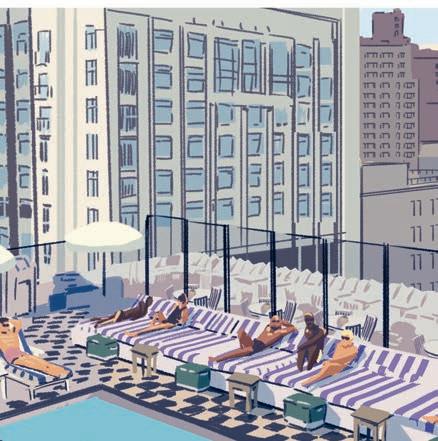
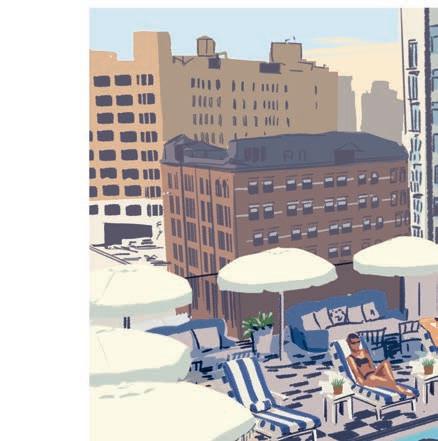
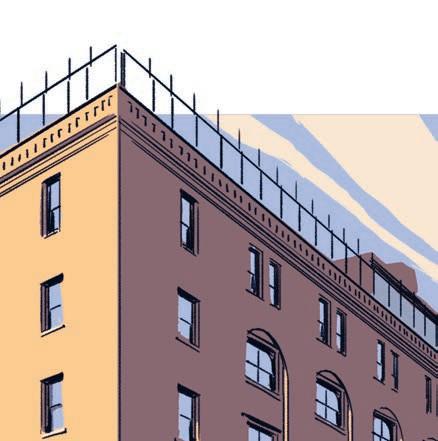


SPRING 2003
SOHO HOUSE NEW YORK BECOMES THE TALK OF THE TOWN WHEN TOM WHELAN, THE LOCATION SCOUT FOR “SEX AND THE CITY”, ASKS TO FILM A SCENE FOR THE SHOW ON THE ROOFTOP.
NICK HOSTS A SERIES OF DINNERS BEFORE THE DOORS OFFICIALLY OPEN. COMMITTEE MEMBERS AND NOTABLE NEW YORKERS, SUCH AS DAVID BOWIE AND IMAN, ATTEND.
2003
IN THE SCENE, SAMANTHA SNEAKS IN USING A CARD BELONGING TO A (FICTIONAL) MEMBER, ANNABELLE BRONSTEIN. “IT MADE SENSE THAT SAMANTHA WOULD BE THE ONE TO DISCOVER SOHO HOUSE,” SAYS ONE OF THE SHOW’S WRITERS, AMY HARRIS. “SHE ALWAYS LIKED TO BE IN ON THE NEXT BIG THING.”


“FOR ONE OF OUR FIRST PARTIES AT SOHO HOUSE WEST HOLLYWOOD, WE INVITED MADONNA AND SHE VERY KINDLY SHOWED UP.”
MARKUS ANDERSON, CHIEF MEMBERSHIP OFFICER
The Secret History Of


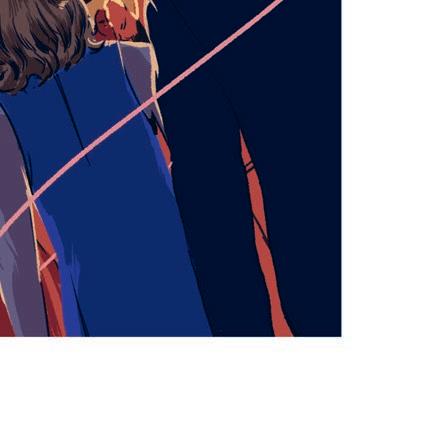
“ GOT HER OUT OF THE CAR IN THE PARKING GARAGE AND MANAGED TO SNEAK HER UP A SECRET STAIRCASE. AS OPENED THE BACK DOOR I REALISED THE DJ HAD JUST STARTED PLAYING ‘MATERIAL GIRL’. ‘OH S**T!’ SAID. SHE ASKED WHAT WAS WRONG. TOLD HER AND SHE LOOKED AT ME FOR A SPLIT SECOND BEFORE SAYING, ‘F**K IT.’ SHE THREW THE DOOR OPEN HERSELF AND WENT INTO THE PARTY TO HER OWN SONG. QUITE THE ENTRANCE.”










